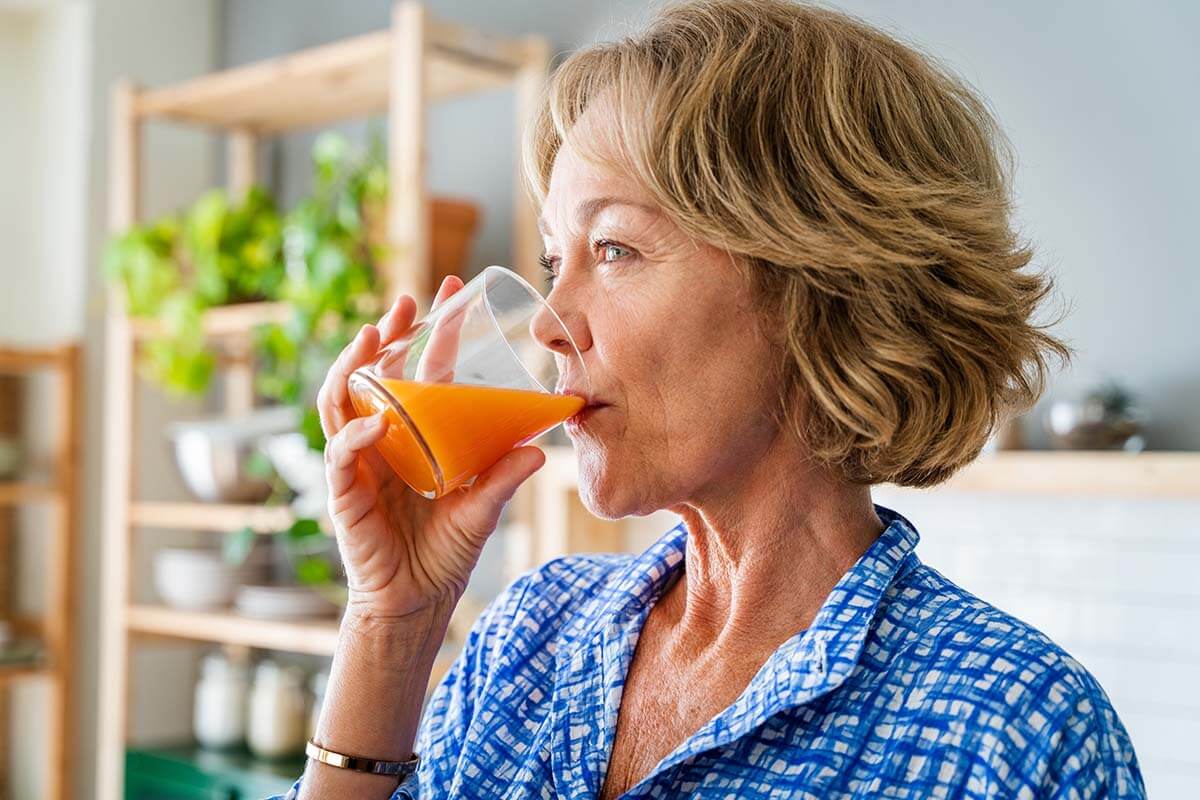
Did you know?
By Cherie Furlan-Craievich RD, Food Services Consultant
Up to 2 out of 3 longterm care residents experience malnutrition, and 3,754 of 100,000 adults over age 85 have protein-calorie malnutrition related hospital stays.
Poor nutrition and hydration can result in higher care needs for the aging senior. Unplanned weight loss can increase chances of older adults being hospitalized. Muscle loss can also occur rapidly due to poor food and fluid intake and as a result can increase risk of falls. We also know, poor nutrition intakes result in slower wound healing and increased skin break down.
Aging is accompanied by physiologic changes that can negatively impact nutritional status. Sensory impairment, such as decreased sense of taste and smell occurs with aging which can result in reduced appetite. Poor oral health and dental problems can lead to difficulty chewing, inflammation, and a monotonous diet that is often poor in nutrient quality. All of these factors increase the risk of malnutrition. Progressive loss of vision and hearing, as well as osteoarthritis, may limit mobility and affect seniors who still live at home ability to shop for food and cook their meals. Aging is also associated with decreased physical activity and progressive depletion of lean body mass. These physiological changes along with changes in their oral intake, can lead to a loss of muscle mass, known as sarcopenia. Sarcopenia, the age-related loss of muscle mass and strength, is a fundamental cause of frailty, functional decline and disability. The primary causes of sarcopenia include a sedentary lifestyle and malnutrition. Decreased functional ability, and increased dependence on others to perform activities of daily living results from sarcopenia. The cumulative effect of the interaction between nutrition and changes seen in aging is progressive undernutrition, which often goes undiagnosed. Early detection of malnutrition is important since it has been associated with diminished cognitive function, mobility, and a diminished ability to care for one’s self.
As we know, energy needs decrease with age; yet the need for most nutrients remains relatively unchanged resulting in an increased risk of malnutrition. Experts in the field of protein and aging recommend a protein intake between 1.2 and 2.0 g/kg/day or higher for elderly adults. The Recommended Dietary Allowances (RDA) of 0.8 g/kg/day is well below these recommendations. It is estimated that 38%
of adult men and 41% of adult women have dietary protein intakes below the RDA. Increasing dietary protein intakes may support not only muscle mass maintenance but also bone health when calcium and vitamin D intakes are adequate).
Tips for Increasing Protein Intake
- Provide protein sources at each meal and snack to maximize opportunity for higher protein intake overall.
- Avoid any dietary restrictions or special diets and provide a liberalized diet; this will help to promote a greater nutrient intake.
- Get creative with the proteins you offer. If a patient has difficulty eating meat or restricts animal products for personal reasons, incorporate whole-food soy options such as tofu, tempeh, and edamame, or offer recipes that use beans as a base or fortified whole grains.
- Incorporate protein powder, skim milk powder or egg whites into a recipe to increase the protein per serving. Egg whites should be added to recipes that will be sufficiently cooked.
- Offer the remaining 12 grams of protein as snacks throughout the day. Some suggestions would be 1oz cheese (7g protein) with crackers, 3.5oz Greek yogurt (8g protein), 1⁄2 cup cottage cheese with saltine crackers (14g protein), or 3 slices rolled black forest ham (9g protein) on 1 slice bread.
- Serve a 4oz serving of MAGIC CUP® Frozen Dessert, as it is nutrient-dense as a dessert or snack. Each MAGIC CUp® Frozen Dessert serving provides 290 calories and 9g of protein, which can be served as both ice cream and when thawed as a pudding. The new packaging is in a see-through cup and is recyclable.
- Offer a concentrated liquid protein to be given with med pass and with meals mixed in his beverages or potatoes/pudding/fruit sauce. This is beneficial for a client who is eating adequate calories but not protein.
- Provide an oral nutrition supplement which is higher in protein in small amounts throughout the day.
- Encourage exercise in combination with consuming an increased protein intake to promote improved nutritional status.
Aging seniors need more dietary protein than do younger people to maintain their physical function. Most older adults who have an acute or chronic disease need even more dietary protein for optimal protein synthesis and to reduce the risk of sarcopenia. Early identification and treatment of malnutrition amongst the aging senior can lead to improved outcomes and better quality of life. As a Nutrition Manager, Foodservice Professional or Registered Dietitian, I know that food and serving great food is at the heart of what we do. I hope you are inspired to use some of these ideas or come up with your own ideas of encouraging aging seniors to eat foods high in protein and energy.